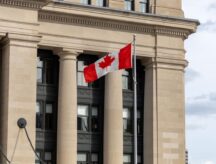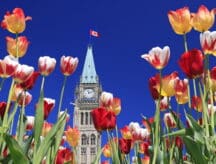The role of the Bank of Canada and how it impacts newcomers
The Bank of Canada (BoC) has raised interest rates to their highest level since 2001.
The overnight lending rate is now 4.75%, which is 25 basis points higher than it was at the previous increase in January this year. The BoC started raising rates in July 2022 when it went from 1.5 % to 2.5%. This means that over one year, the rate has increased by 3.25 percentage points.
The current rate hike comes as something of a surprise to many as BoC Governor Tiff Macklem had said previously that the BoC would try to avoid further increases.
Discover if You Are Eligible for Canadian Immigration
The BoC expected that the previous increases would reduce consumer spending to the point where the economy could slow and stabilize. However, the BoC says there have been unexpected increases in spending on interest-sensitive goods, including the housing market.
It also says the labour market remains tight and that immigration and participation rates have expanded the supply of workers, who are being hired quickly. This means that there continues to be high demand on Canada’s economy.
The BoC has maintained a high interest rate in recent months to slow consumer spending and reduce the level of inflation, which currently stands at 4.4%. Theoretically, less spending means there is less demand for products and services. This means that businesses don’t need to work as hard to meet the needs of consumers and can (or need to) lower their prices.
What is the Bank of Canada?
The Bank of Canada was established as Canada’s central bank in 1934 and became a crown corporation in 1938. It is owned by the federal government but operates mostly independently.
The Bank of Canada Act says the Bank’s purpose is to “regulate credit and currency in the best interests of the economic life of the nation.” It is responsible for setting interest rates and creating policies that will have a positive impact on Canada’s economy.
The BoC has four main areas of responsibility:
- Monetary policy: The BoC influences the supply of money circulating in Canada’s economy, using our monetary policy framework to keep inflation low and stable.
- Financial system: To promote safe, sound, and efficient financial systems, within Canada and internationally. It also conducts transactions in financial markets in support of these objectives.
- Currency: The BoC designs, issues, and distributes Canada’s bank notes.
- Funds management: It is the “fiscal agent” for the Government of Canada, managing its public debt programs and foreign exchange reserves.
While the federal government owns it, the BoC website highlights a few ways in which the two are separate:
- The Governor and Senior Deputy Governor are appointed by the Bank's Board of Directors (with the approval of Cabinet), not by the federal government.
- The Deputy Minister of Finance sits on the Board of Directors but has no vote.
- BoC expenditures are submitted to its Board of Directors, whereas federal government departments submit theirs to the Treasury Board.
- BoC employees are regulated by the Bank itself, not by federal public service agencies.
- BoC’s books are audited by external auditors appointed by Cabinet on the recommendation of the Minister of Finance, not by the Auditor General of Canada.
The BoC says that by being independent from the political process it can adopt the medium- and long-term perspectives essential to conducting effective monetary policy.
Still, according to the Bank of Canada Act, when the BoC and the government disagree on monetary policy, the Minister of Finance after consulting with the Governor and with the approval of the Governor in Council, can give the Governor a written directive concerning monetary policy. The directive must include specific terms and be applicable for a specified period, and the BoC must comply.
How do high interest rates impact newcomers?
Higher interest rates mean it is more expensive to borrow money from Canada’s banks to make large purchases, such as a mortgage or a car.
Making mortgages more expensive can make it difficult for newcomers to Canada to purchase a home. This often results in many newcomers renting their first homes instead of buying, but that can also be expensive. For example, according to Zumper.ca the current average rental price of a one-bedroom apartment in Toronto is currently $2,425 per month.
Canada’s tight labour market is also creating demand for skilled newcomers. According to the Immigration Levels Plan, Canada will welcome 500,000 new permanent residents each year by 2025. This number is high in part because several employment sectors are dealing with a shortage of skilled workers.
To help Canada reach its immigration targets while also filling these gaps, Immigration, Refugees, and Citizenship Canada (IRCC) is expected to begin holding new category-based selection draws later this summer for Express Entry candidates with work experience in specific high-demand occupations.
Still, more people can lead to more spending and demand for goods, services and housing which could make it more challenging to bring down interest rates. It is not known how the BoC will adapt moving forward.
- Do you need Canadian immigration assistance? Contact the Contact Cohen Immigration Law firm by completing our form
- Send us your feedback or your non-legal assistance questions by emailing us at media@canadavisa.com






